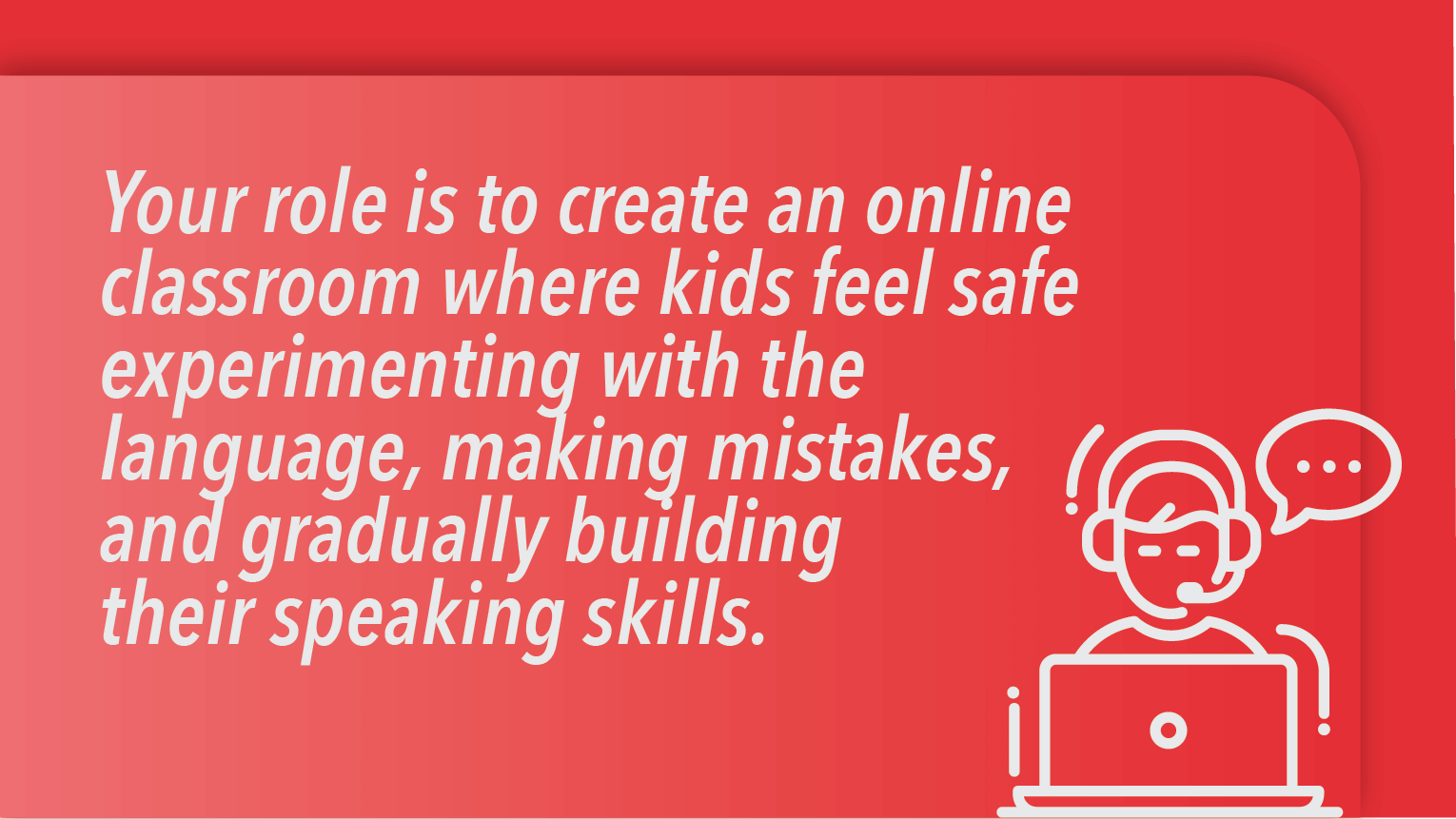How to Teach English to Kids Online in 2025: A Complete Guide for New Teachers
The challenge many new teachers face is making English lessons both fun and engaging. This guide will show you exactly how to succeed with young learners.
For many kids around the world, school days are long — starting early and stretching into the evening. By the time they log into your English class, they're often tired and craving entertainment.
Your mission? Transform those evening lessons into high-energy sessions that help them focus on learning English while having fun! We'll show you how to spark their curiosity and keep them engaged — even when they're mentally drained.
Understanding Your Students' Reality

If you're teaching Asian children, it's important to understand that their education is a full-time commitment. School begins at 7:30 AM and often doesn't finish until 5:00 PM. With homework and additional after-school tutoring, these young learners juggle a schedule that would exhaust most adults. Your role is to make these final hours count (6-9 PM their time).
Knowing your students' cultural and educational framework will help you connect and teach more effectively. Learning in Asia is fundamentally different from Western education - here's what most teachers don't realize:
- Teacher as Authority: Teachers are seen as figures of respect and authority. Students follow instructions carefully and rarely question the teacher or volunteer answers unless specifically asked. While respectful, this can make interactive learning challenging without proper encouragement.
- Silence Isn't Stubbornness: Many students have never interacted with a foreigner before. Combine this with a cultural system where questioning authority is impolite, and you'll understand why getting responses can feel like pulling teeth.
- Fear of Mistakes: Students may hesitate to speak up or try new things, fearing embarrassment or "losing face." This can make them overly cautious and reluctant to take risks in learning.
- Structured Learning: Schooling often prioritizes repetition and memorization over creativity and critical thinking. While students excel at structured exercises, they may need extra support with creative or open-ended activities.
- Worksheets Versus Discussion: Students are incredibly comfortable with structured work but may panic at open-ended questions like "What do you think?" They need to be slowly eased into expressing personal opinions.
Planning Effective Online English Lessons
Creating engaging online lessons for Chinese students requires a careful balance of structure and fun. Your role is to create an online classroom where kids feel safe experimenting with the language, making mistakes, and gradually building their speaking skills.

Here's how to make every minute count:
1) Get To Know Your Students
Kids zone out fast when they're not interested in the topic you're teaching. But they'll stay laser-focused when you're talking about their favorite video game or what happened at school that day.
So, take time to learn what makes each student tick. Does Lily love cats? Use them in your grammar lessons. Is Tom obsessed with basketball? Use that when practicing past tense verbs: "Who won the NBA game last night?"
Here's how to build those personal connections:
- Start With Genuine Interest: Ask about their hobbies, interests, school life, and family. These aren't just icebreakers – they'll help you create personalized lessons that stick.
- Observe Learning Styles: Some students respond better to visual aids, while others prefer movement or songs. Pay attention to what works for each student and adapt accordingly.
- Bridge Cultural Gaps: Show respect for Chinese traditions and celebrations. This helps build trust, especially with older students who may be initially reserved.
Questions That Build Connections
Here are some ESL needs analysis questions you can tailor for your kids.
Understand Their Language Journey:
- Do you like learning English? Why or why not?
- What's your favorite thing about learning English?
- What's the hardest part of learning English?
- Who do you speak English with?
- Does anyone in your family speak English? Do they help you practice?
- Have you ever helped a family member learn English?
Getting To Know Their World:
- What's your favorite subject at school?
- What hobbies do you enjoy?
- What's your favorite movie, TV show, or cartoon?
- Do you like reading books or comics? What's your favorite?
- Do you like playing sports?
- What's your favorite video game?
- What do you talk about with your family at home?
- Do you ever teach your family something new you've learned at school?
Remember: These questions show students you care about their lives and not just their progress in learning English.
2) Establish A Lesson Routine
Children thrive in highly structured settings, so bring that into your online classroom:
- Start With Routines: Begin each class with a clear structure — greetings, a warm-up activity, and a quick review of previous lessons. This is their signal that "English time" is starting.
- Keep Instructions Clear And Simple: Overwhelming them with too much information at once can cause confusion. Break tasks into clear, actionable steps. Turn instructions into mini-games, like "Can you spot three animals in this picture? Good — we'll use those words in our story!"
- Concept Check: Ask kids to paraphrase the instructions to confirm they know what to do. "Can you tell me how you will do this activity?" helps ensure clarity and keeps them engaged. Write instructions in the chat box for them to read as well.
- Teacher Talk Time: Aim for only 20-30% teacher talk time (TTT) — roughly 6-9 minutes if you're teaching for 30 minutes – is ideal. Use props or visuals to explain concepts instead of lengthy explanations.
- Thinking Time: Give your student 10 seconds to consider before jumping in with another prompt or question. Count to 10 in your head to help you pause and give them space to respond.
I start every class with my puppet, Mr. Monkey, saying, 'Hello! How are you?' My student loves it and even brings their own toy to respond!
Sabrina, A Really Great Teacher
3) The 5-Minute Rule: Understanding Student Attention Spans

One challenge for teaching kids online is their short attention spans. Childhood development experts tell us children can typically focus for two to three minutes per year of their age. For a 6-year-old, that's about 12-18 minutes max. But online, that attention span is even shorter - so segment your lessons.
Why 5 Minutes Work
Young learners need variety to stay focused. Using a mini-Pomodoro approach — five-minute activities with one-minute energizing breaks — creates:
- Natural urgency to keep kids engaged.
- Clear endpoints that make focusing feel manageable.
- Processing time to retain new information.
- Opportunities for movement and energy reset.
Your 25-Minute Lesson Plan:
- First 3 Minutes: High-energy welcome and lesson framing.
- 5 Minutes: Main teaching point.
- 1-Minute Break: Quick movement song (like "Head, Shoulders, Knees and Toes").
- 5 Minutes: Practice new material.
- 1-Minute Break: Stand-up stretch or action game.
- 5 Minutes: Interactive activity or game.
- 4 Minutes: Quick review and reward time.
4) Get Moving: TPR in Action
Kids aren't built to sit still at screens, and movement isn't just fun — it's essential for learning. Total Physical Response (TPR) is a teaching method that combines language learning with physical movement, making lessons active and memorable.
The concept is simple: students act out what they hear while teachers model the actions, give clear commands, and encourage participation with enthusiasm and props. By connecting words to actions, kids absorb language faster and retain it longer. This method is perfect for kindergarten-age kids who struggle to stay engaged during online lessons.
Quick Action Ideas:
- Act Out Vocabulary: "Swim like a fish!" or "Walk like an elephant!"
- Simon Says with TPR: Mix target language into commands.
- Movement Countdowns: "Jump 5 times and show me something blue!"
- Vocabulary Races: "Touch something soft in your room!"
- Action Songs: Use classics like "Head, Shoulders, Knees and Toes."
TPR resets their focus and makes learning stick.
I make breaks exciting by turning them into mini-challenges. I'll say 'You have 20 seconds to find something blue or soft!' I always count down dramatically – '10..9...' Kids love racing against the clock, and it gets them moving without losing lesson momentum.
Wayne, A Really Great Teacher
5) How to Teach Critical Thinking
Students often freeze when asked open-ended questions, "What do you think?" Schooling is often about memorization, not sharing opinions, so here's how to help them adjust:
- Start With Facts: Begin activities with knowledge-based questions, like "What color is the dog?" to give them safe, correct-answer questions.
- Add Choices:"Is the dog happy or sad?" - make sharing opinions easier with simple options.
- Go Deeper:"Why do you think the dog is sad?" - ease into critical thinking.
- Build Step By Step: Gradually add layers of complexity, like "What do you think will happen next in the story?" to encourage deeper thinking.
Pro Tip: Keep a list of question starters handy: "What if...", "How could...", "Why might..." When students get comfortable with one level, they move to the next.
The 'You Choose' books are perfect for online teaching - each page is packed with fun options like houses, vehicles, or adventures for kids to pick from. I just share my screen and ask 'Which would you choose?' Even my shyest students light up to tell me why they'd live in a treehouse or sail on a pirate ship!
Maya, A Really Great Teacher
Remember: Some students might take weeks to feel comfortable sharing thoughts. That's okay - keep offering opportunities without pressure.
6) Tackling Chinese Language Challenges
Chinese kids often struggle with certain English sounds that don't exist in Mandarin. Chinese has about 1,300 syllable combinations when you include tones, while English uses 44 distinct sounds.
01
The Th-Sound Challenge
Chinese has no equivalent to the English 'th' sound, making words like "thank you" and "three" particularly tricky. Many replace it with an "s" sound as both are articulated similarly in the mouth.
Here's how to resolve:
- Show them the "tongue peek" trick:"Put your tongue between your teeth. Now blow air out."
- Make it playful:"We're all happy snakes today - stick out your tongues and say 'thhhhhank you!'"
02
The L/R Puzzle
These sounds aren't clearly distinguished in Mandarin, leading to mix-ups like "light/right" or "rice/lice." Rather than correcting every mistake (which can destroy confidence),try these engaging approaches:
- Turn It Into A Game:"Are we eating 'rice' or 'lice' for dinner?" (Kids love silly options!)
- Use Movement:"Touch your nose for 'L' words, touch your ears for 'R' words."
- Use Tongue Twisters:"The lion loves to lick lollipops" for 'L' practice, or "Red leather, yellow leather."
03
Final Consonants
Chinese syllables usually end in vowels, making English words ending in consonants feel unnatural to Chinese speakers. "I thought" might sound more like "I thaw," as the final consonant sound is softened or dropped. Or a vowel sound might be inserted at the end of English words, turning "and" into "an-duh."
Try:
- Focus on mouth positions: For m, b, and p remind students to close their lips at the end. For d, t, n, emphasize placing the tongue behind the front teeth. Use a mirror so they can see their mouth movements.
- Stretch the final sound: Slowly exaggerate endings, like "b-a-g-g-g," and have students mimic you.
- Create rhythm games: Clap and chant - "Cat, hat, rat, mat!"
04
Gender Pronouns

In Mandarin, "he,""she," and "it" have the same pronunciation but use different written characters. This makes English pronoun usage especially tricky for Chinese learners, who often mix them up in speaking and writing.
To help students master pronouns, try:
- Rapid-Fire Pronoun Game: Show images quickly and ask, "He, she, or it?" Use a mix of people (he/she) and objects/animals (it). Keep the pace fast to make it fun!
- Pronoun Match: Give simple sentences with matching pictures: "He is reading" with a boy reading, "She is dancing" with a girl dancing. Students point and match.
- Who Am I?: Display several pictures. Students ask yes/no questions to guess: "Is she a girl?" or "Is he wearing glasses?"
With the above, you can use Chinese teaching methods to your advantage through repetition to learn new patterns.
7) Boost Attention Through Storytelling
Why do kids remember every Bluey episode but forget vocabulary? The answer is simple: stories stick. They engage emotions, activate imagination, and make learning memorable.
Here's how to use storytelling in your online lessons:
- Use Personal Stories: Share relatable experiences, like getting lost and needing to ask for directions in English.
- Create Characters: Introduce "Lost Leo," who needs help navigating a city when teaching directions.
- Turn Grammar Into Adventure:"Help Super Cat find his missing '-ing' endings!" or "Let's rescue these sentences from the punctuation monster!"
- Make It Interactive: Ask "What happens next?" or have students choose where the story goes next.
- Add Drama To Instructions:"Oh no! These sentences lost their periods. Can you be a punctuation detective?"
- Connect To Their World: Use characters from shows they love - "Just like Peppa Pig learning to ride a bike, we're going to learn about trying new things!"

Pro Tip: Keep stories simple and repetitive for younger learners. The same character can appear in different lessons, building familiarity and excitement.
8) Master The Element of Surprise
Kids love surprises - so introduce unexpected props, sounds, or games to break up monotony. Unexpected moments grab attention instantly and snap their focus back to the lesson.
Here's how to bring surprise into your lessons:
- Pop-up Props: Hide objects outside your camera and reveal them at key moments - a stuffed animal for animal vocabulary, a toy car for transportation words.
- Surprise Sounds: Play mystery sounds, such as animal noises or weather sounds, for students to guess. Use sound effects like applause when kids answer correctly.
- Voice Changes: Switch between different character voices for different activities.
- Screen Magic: Switch virtual backgrounds strategically - "teleport" to different locations for each lesson segment.
Pro Tip: Keep a "surprise box" next to your desk with 2-3 attention-grabbing props for when energy dips. Pulling out a colorful hat or silly glasses can instantly re-engage a distracted student.
Engaging a child's attention online is like catching a butterfly — you need the right mix of patience, creativity, and quick thinking. A simple trick, like a finger puppet popping into view, can reignite focus. When learning feels like a game, attention follows naturally.
Michelle, A Really Great Teacher
9) Use Humor To Make One-on-One Lessons Fun
By evening, your students have already endured 8+ hours of serious classes. Your role? Be the teacher who makes English feel less like work and more like play.
Here's how to keep their energy up:
- Play With Exaggeration: Make size comparisons ridiculous – "Is your cat as big as an elephant?" or "Did you eat 1,000 pizzas for lunch?" This gets students talking while having fun.
- Playful Riddles: Keep them simple and act them out: "I have a tail and a head, but I don’t have a body. What am I?" Use exaggerated gestures - point to an imaginary tail and head, then act shocked about the missing body. Reveal the coin with excitement!
- Spot The Teacher's Mistakes: Use the wrong words intentionally, such as "I brush my teeth with... a banana!" Kids love being experts and correcting their teachers.
- Play With Sizes: Make size comparisons ridiculous - "Is your cat as big as an elephant?" or "Is your house smaller than an ant?" These get students talking while having fun.
- Celebrate Success: Create mini celebrations for wins, big and small. Blow a party horn or do a silly victory dance. Kids love it when teachers get excited about their success!
- Character Voices: Using different voices for different activities keeps energy high.
- Props With Personality: Keep a stash of silly hats, colorful toys, and quirky objects nearby. Wearing a pirate hat will suddenly spark curiosity.
When my student starts yawning, I put on a silly hat and suddenly they're sitting up straight, giggling, and ready to learn again!
Rebecca, Online ESL Teacher
10) Building Student Confidence

After all the games, riddles, and activities, your ultimate goal is to help students believe in their English abilities.
Making Progress Visible:
- Celebrate Small Wins: Point out improvements specifically - "Last week you couldn't say 'three,' but now you're saying it perfectly!" Make their progress feel real and exciting.
- Create Success Routines: Start each class by practicing something they've mastered. Beginning with confidence sets the tone for trying newer, more complicated things.
- Turn Mistakes Into Games: When they make errors, respond with playful energy - "Oh! The grammar monster caught that sentence! Let's rescue it together!"
- Build Speaking Courage: Use their interests to encourage talking. If they love gaming, let them teach you about their favorite game - even broken English is progress when they're excited to share.
Pro Tip: End each lesson by highlighting one specific thing they improved today. It's the last thing they'll remember and keeps them excited to learn more.
Conclusion: Making Every Lesson Count
The key to successful online English teaching isn't just about what you teach but how you teach it. Chinese students excel at memorization and written work, but many struggle with the confidence to speak English freely.
Your role as their evening teacher is unique — you're not just teaching English; you're creating a space where tired students find new energy to learn. Through gestures, movement breaks, and well-timed humor, you can transform those end-of-day classes into sessions students look forward to.
Remember:
- Keep activities short and high-energy.
- Match your teaching style to your student's personality.
- Celebrate progress, no matter how small.
- Use their interests to spark engagement.
- Build confidence through encouragement, not correction.
Success isn't measured by perfect pronunciation or grammar but by students who log in, excited to learn, ready to try, and willing to make mistakes. When a shy student finally starts volunteering answers or a tired student perks up at your silly hat - that's when you know you're making those evening hours count.
Teaching English isn't about being perfect - it's about making students feel safe enough to try. Real learning begins once they trust you and feel comfortable making mistakes.
Lynn, A Really Great Teacher
